Only Russia can solve the Nagorno-Karabakh conflict – but does it really want to?
Acting half as a mediator and half as an instigator of a decades-old conflict, Russia has far-reaching interests in keeping the South Caucasus inflamed with tensions
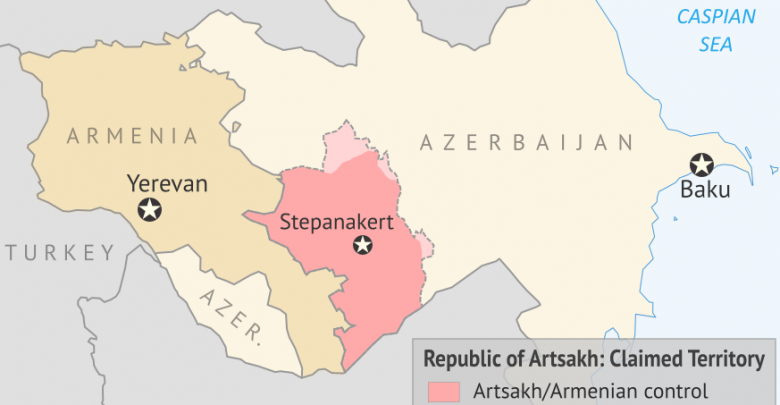
Between April and May of this year, Armenia came under the spotlight of the international community for a series of anti-government protests. These came in response to Serzh Sargsyan’s third consecutive term as the most powerful figure in the government, and later turned into protests against the whole government establishment and the ruling Republican Party. The so-called Velvet Revolution brought sweeping changes to the political set-up of Armenia, primarily through the newly-elected Prime Minister Nikol Pashinyan. Among the many changes which the new government has promised to bring, there have been some feeble openings towards a new attempt at resolving the Nagorno-Karabakh conflict.
While remaining firm in its refusal to recognise the territory as rightfully Azerbaijan’s, it has called for a resumption of proactive peace talks together with authorities in Azerbaijan, Nagorno-Karabakh, and the international community which has styled itself as a mediator in the negotiations. However, this opening is unlikely to bring any changes to the status quo in the region. Russia, in particular, has every interest to keep the conflict alive. The reasons for this need to keep tensions in the South Caucasus high are varied and all equally important for the Kremlin, especially as support for Putin and his government is waning.
The origins of the conflict
Ever since the dormant conflict in the mountainous enclave of Nagorno-Karabakh exploded into a four-day war between Armenia and Azerbaijan in April 2016, tension in the South Caucasus has been simmering quietly, ready to boil over at any moment. With the two-decade old peace process in the deepest deadlock since the first ceasefire, the escalation of war rhetoric and cross-border skirmishes along the line of contact between Azerbaijani and Armenian troops has been commonplace.
The Nagorno-Karabakh conflict has proved a real Gordian knot to resolve. It has left more than 30,000 dead and one million displaced, with the prospect of many more to come if a solution is not found. No diplomatic attempt, international intervention or supranational organisation has so far managed to obtain more than uneasy, short-lived truces.
The roots of the conflict can be traced back to 1921, when the Soviet Union placed the ethnically Armenian territory of Nagorno-Karabakh under the jurisdiction of the Azerbaijani Soviet Republic, in an effort to divide and rule the South Caucasus. In 1988, Nagorno-Karabakh sought to reunite with Soviet Armenia, but its attempts were repressed through blood and violence. The fall of the USSR did not stop the escalating violence, and the resulting war ended with the Armenian troops’ occupation of about 20% of Azerbaijani territory – namely Nagorno-Karabakh and seven surrounding Azerbaijani districts. Although nowadays the unrecognised Republic’s aim is to achieve independence, Armenia remains its most important ally, especially militarily.

In 1994, Russia successfully mediated the first cease-fire between the two parties, and was part of the creation of the Minsk Group under the Organization of Security and Cooperation in Europe (OSCE). This group – which sees Russia, the United States and France as co-chairs – has since been tasked with mediating and leading the peace talks between the two parts of the conflict.
However, not even the ceasefire has been effective in maintaining peace, and it has been systematically broken to allow for fighting along the line of contact. More than twenty years of peace negotiations have not brought the parties much closer to a permanent solution of this frozen conflict. And while both Yerevan and Baku do not seem keen to strike a peace deal, the absence of any progress in the Nagorno-Karabakh peace talks is often attributed to external actors – and naturally the Minsk Group co-chair countries are the first suspects. Of the countries with geostrategic interests in the region, Russia bears the lion’s share of the blame.
Russia as a mediator
As of late, against the prevailing perceptions of its European and U.S. partners, Russia has increasingly less influence over the South Caucasus territory and in particular over the Nagorno-Karabakh peace process. Unlike in the cases of other frozen conflicts such as Abkhazia, South Ossetia and Transnistria, Moscow does not offer financial and moral support to Nagorno-Karabakh, it does not have direct contacts with its de facto leadership in Stepanakert, and it does not have military forces situated in its territory.
And while sometimes the Russian levers over Armenia are attributed also to Nagorno-Karabakh due to the close relationship between the two, it would be wrong to consider the two as one and the same. In the current situation, Yerevan and Stepanakert have principally divergent views concerning the resolution of the conflict. As such the Russian influence over Armenia would hardly have an impact on the unrecognised Republic when it comes to peace talks.
On much of the same line, its official approach to Nagorno-Karabakh diverges significantly with its treatment of other conflicts. So far, it has carefully omitted to take a side in favour of either part, instead selling itself as an honest broker in the peace talks. It would against Moscow’s strategic interests to be forced to take sides should there be a military escalation of the conflict. This would undermine its credibility as a security guarantor, with repercussions in its wider foreign policy. In particular, it would have negative effects on its influence in the South Caucasus. Ever since Georgia left Russia’s orbit of influence in favour of the EU, Moscow has been very careful not to lose any further friends in the area. Taking a side in the conflict would have the sure result of antagonising one of the two parties and its allies.

These differences are of a significant importance: while in the case of the other frozen conflicts Russia has evident interests which manifest themselves in military and political meddling, these elements seem to be absent in this conflict, which points towards Russia actually wanting to style itself as a mediator instead of furthering its own interests by keeping the conflict alive.
Because of these reasons, it would be untenable to place the whole blame for the lack of a long-term solution to the issue onto Russia. In fact, as long as military escalation remains the only alternative to the current frozen tensions, the present-day situation is seen as the only feasible solution by all mediators. Despite the standstill of talks, the Minsk Group has been rightfully hesitant in advocating the unacceptability of the current status quo, as it could be interpreted wrongly by either side and inadvertently prompt a military escalation which would lead to a further degradation of the conflict.
Russia as an instigator
However, Moscow’s hesitance to take a stance in the conflict and to proactively push for a solution in the conflict is not actually born out of a genuine concern for the aftermaths of a war or for the worsening relationships between Armenia and Azerbaijan. In fact, the Kremlin’s influence over both countries means it could push along peace talks if it really wanted to find a resolution to the conflict.
The fact that it gains both economic and political advantages from the status quo means that Moscow has no interest in taking steps to broker a peace deal. In particular, Russia has two primary interests through its involvement: it hopes to monopolise the peace settlement process in order to increase its political clout in the region, and it wants to maintain the economic gains made through trade deals both with Armenia and Azerbaijan.
Ever since the first war sparked out, Moscow has been openly playing both sides. On one hand, it is Armenia’s self-proclaimed ally. Yerevan joined the Moscow-led Eurasian Economic Union in 2014, integrating it within the Russian single market. Moreover, the two have bilateral cooperation agreements in place, not only individually but also within the Collective Security Treaty Organisation (CSTO), a grouping of post-Soviet states similar to NATO. On the basis of these agreements and of a mutual defence pact, Russia has managed to permanently station its troops on their territory in the name of “protection”, which guarantee it a strong control over its neighbour. This has allowed them to sell large amounts of sophisticated weaponry to Armenia, including nuclear-capable Iskandar ballistic missile systems, which have a range of up to 500 kilometres and the ability to reach targets deep into the Azerbaijani territory.

On the other side, Russia is also the single largest providers of arms to Azerbaijan. From 2010 to 2014, a period when its annual imports more than tripled, Azerbaijan received 85% of its arms imports from Russia. Considering that Baku’s military expenditure is twice as large as Armenia’s entire government budget, Russia has no interest in losing this important economic revenue. Moscow’s likely aim is also to push Azerbaijan towards closer engagement with the Eurasian Economic Union and the CSTO, thus curtailing its engagement with the West.
The Kremlin has defended this double-dealing by stating that it considers this as a policy of deterrence in Nagorno-Karabakh. By controlling the flow of arms to both countries, it has said, a full-scale war is made less likely. However, it has also meant that if any fighting should break out, it would be made deadlier due to the increasing amount of people staring down gun barrels. If the logic of deterrence holds up and the conflict stays frozen, Russia will benefit from arms sales to both sides and from a growing political and economic dependence from both countries.
The wider picture
The Kremlin isn’t keeping the conflict in the South Caucasus only for its direct economic advantages through arm sales. It also derives indirect benefits from it thanks to it thwarting Europe’s long-term plans to reduce reliance on Russian oil and gas supplies. The only other route to bring Caspian energy to Europe is through the Caucasus, in particular though Azerbaijani pipelines which closely coast the Nagorno-Karabakh territory. In case of a conflagration of the conflict, it is likely that these pipes would be shut down for safety reasons, in order to avoid oil spills or gas leaks should they be damaged during the conflict.
Europe deeply values the existing pipelines, and hopes to see many more in the future. But those hopes are limited so long as the conflict over Nagorno-Karabakh remains unsettled, thus maintaining its reliance on Russia high. Were the conflict to be resolved, it would open the floodgates to invest in Baku for energy, which would reduce Moscow’s geopolitical importance and lever over Europe.
The region is also strategically placed for Russia’s larger interests in its foreign policy, especially in relation to Turkey. The interactions between the two countries have been shifting rapidly in recent years. After a decline in good relations between Putin and Erdogan following the Turkish downing of a Russian fighter jet in Syria in November 2015, Moscow and Ankara have now returned to a comfortable friendship. But this could change again at any time as the two countries’ interests adapt to the geopolitical situation in the region. In the meantime, as possible defence, Russia has started to boost the two Russian bases in Armenia — one an army post and another an air base.
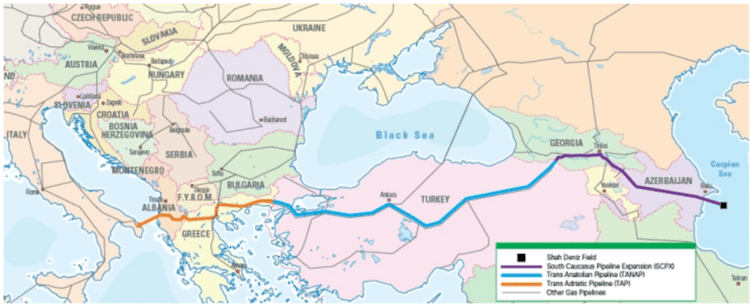
Incidentally, these are near the Turkish border, and the timely Armenian purchase of the Iskandar ballistic missile systems would allow Putin to strike at Turkish targets at any moment. The Russian military bases in Armenia, which exist thanks to the continued conflict in Nagorno-Karabakh, are there primarily not to defend Armenia from Azerbaijan’s threats, but to curb military attacks from Turkey. Considering the 2010 Agreement of Strategic Partnership and Mutual Support between Baku and Ankara, in which both agree to support each other “using all possibilities” in the case of military aggression, the threat is not completely idle.
That rivalry is played out not only in the Caucasus area, but increasingly also in the Black Sea region and in Syria. Russia has been selling advanced fighter jets and air-defence missiles to one of Turkey’s biggest rivals, Iran. Together with the Armenian bases, it is effectively surrounding Turkey in preparation for a change in the tide.
Concerning Syria, the matter is geostrategically very delicate, especially as the conflict seems directed towards its epilogue. Foreign demilitarisation is a normal consequence of the Syrian civil war coming to an end, but it does mean that the Kremlin’s direct influence in the area is about to be downgraded at the most crucial moment. It is fundamental for Russia to have a strong voice during peace negotiations to allow it to maintain its role and power over the Levantine territory. Having troops and a strong presence in Armenia will allow Putin to keep as close as possible to Syria and if necessary intervene promptly with its military forces. What appears evident from all of this is that Russia is extending its sphere of influence outside of its traditional territories, and it is using the pretext of the decade-old Nagorno-Karabakh conflict to do so.
Future prospects
The risk of a full-scale war between Azerbaijan and Armenia has increased exponentially after the four-day war in 2016. More pressingly for the international community, the Nagorno-Karabakh conflict has the potential to become another arena in which Turkey and Russia, through proxy, compete for power and influence. If something of the sort happened, it would most likely trigger a reaction from Georgia – which happens to lie between Moscow and Ankara and is the main point of transit to reach both Armenia and Azerbaijan. Both countries would likely demand the right to transit troops over its territory, and if Georgia were to grant preferential access to any one of the two, it would most likely drag Georgia in the middle of the armed conflict.
As if that weren’t enough, Iran – which like Georgia holds large Azeri and Armenian minorities in its territories – would probably end up being actively involved as well. The revived conflict in Nagorno-Karabakh may thus evolve into a larger confrontation between multiple regional great powers. However, excluding any diplomatic incident, it is unlikely that a war is actually going to spark – both Europe and Russia have too much to lose to allow an escalation to that point.
As for Russia, stepping up the conflict would also eventually lead to the involvement of the international community – as has happened in Syria – and closer attention to the Kremlin’s moves in the South Caucasus. Moreover, any settlement of this conflict would effectively mend the Turkey-Armenia-Azerbaijan divide and bring Moscow’s regional clout to an end.
Because of this reason, as well as Armenia’s and Azerbaijan’s reticence, it is unlikely that we will see a resolution to the Nagorno-Karabakh dispute in the next few decades, but it is equally unlikely that the situation is going to worsen. Much will depend on whether Yerevan or Baku decide to set free of the vestiges of Russia’s control and align definitely with Europe. If they were to push for integration within the European Union, solving the Nagorno-Karabakh conflict would be a prerogative. However, as of now, it appears that only Azerbaijan is interested in joining the Union. Armenia, on the other hand, remains firmly aligned with Russia through the Eurasian Economic Union, which has created a single market and stronger economic ties between the two.

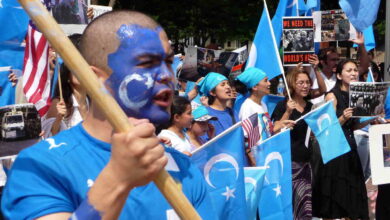
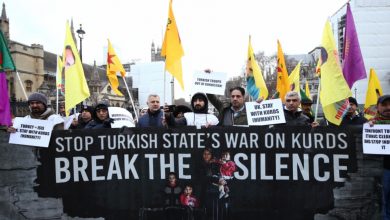
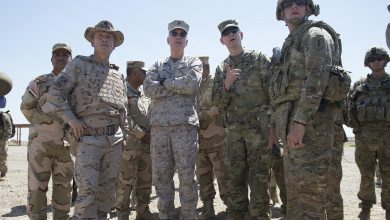


One Comment